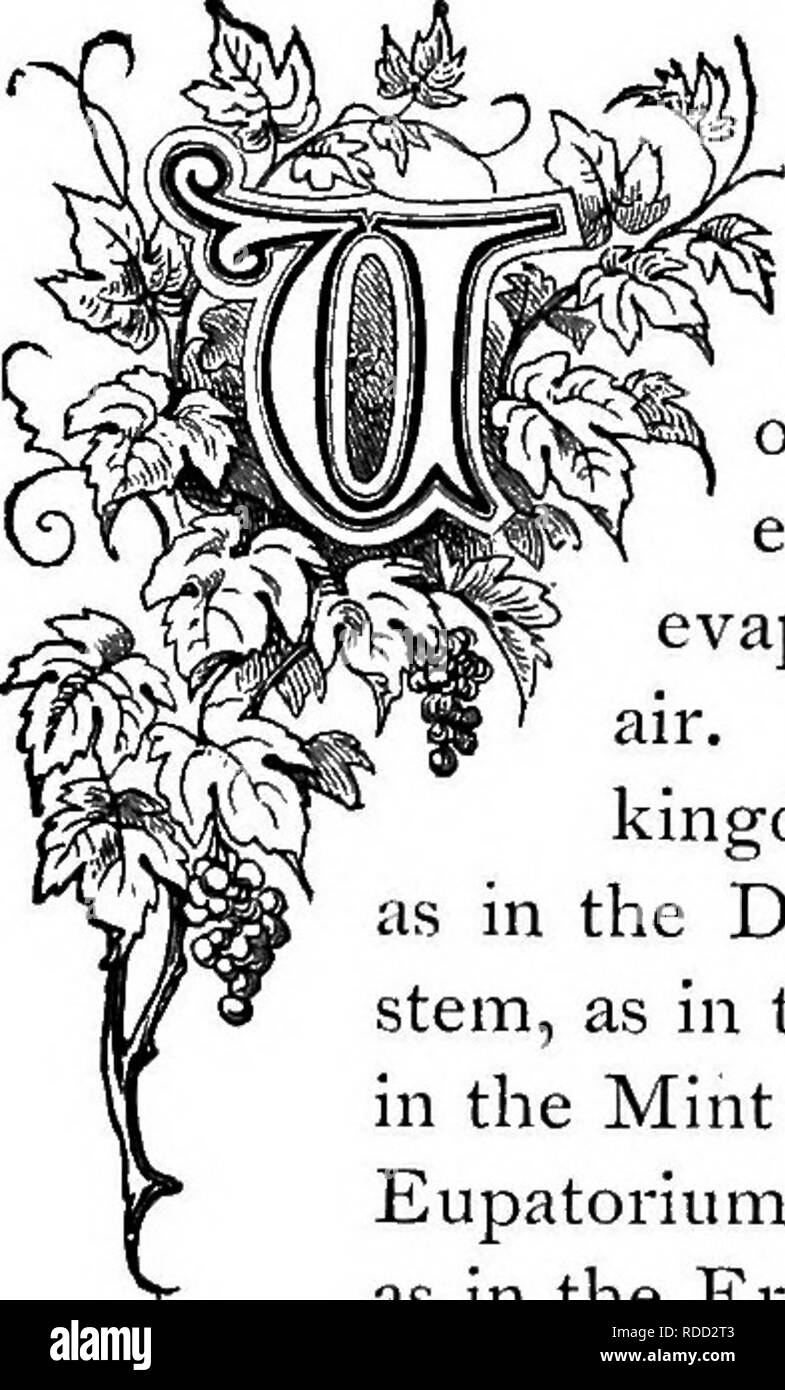. The floral kingdom : its history, sentiment and poetry : A dictionary of more than three hundred plants, with the genera and families to which they belong, and the language of each illustrated with appropriate gems to poetry . Flower language; Flowers in literature. CULTIVATION AND ANALYSIS OF PLANTS. Stalks.—The stalks are the offshoots from the stem, which directly support the leaves, and are variously styled peduncles, pedicels, petioles, meaning respectively flowerstalks, footstalks and leafstalks. Axil.—The axil is the angle formed on the upper surface, betw^een the stem and leaf, vsrhe

Image details
Contributor:
The Book Worm / Alamy Stock PhotoImage ID:
RDD2T3File size:
7.1 MB (345.5 KB Compressed download)Releases:
Model - no | Property - noDo I need a release?Dimensions:
1229 x 2033 px | 20.8 x 34.4 cm | 8.2 x 13.6 inches | 150dpiMore information:
This image is a public domain image, which means either that copyright has expired in the image or the copyright holder has waived their copyright. Alamy charges you a fee for access to the high resolution copy of the image.
This image could have imperfections as it’s either historical or reportage.
. The floral kingdom : its history, sentiment and poetry : A dictionary of more than three hundred plants, with the genera and families to which they belong, and the language of each illustrated with appropriate gems to poetry . Flower language; Flowers in literature. CULTIVATION AND ANALYSIS OF PLANTS. Stalks.—The stalks are the offshoots from the stem, which directly support the leaves, and are variously styled peduncles, pedicels, petioles, meaning respectively flowerstalks, footstalks and leafstalks. Axil.—The axil is the angle formed on the upper surface, betw^een the stem and leaf, vsrhere the buds, called on that account axillary, spring ffom the stem (13).. NDERSTOOD to be expansions or elongations from the stem, leaves consist of a network of fibers or nerves in two distinct sets, one to each surface. The purposes they serve are mainly three: to expose a broader surface to the action of the light and heat, to aid evaporation, and to facilitate the absorption of carbonic acid from the air. They discharge the function fulfilled by the lungs in the animal kingdom. They are called radical, when they spring around the root, as in the Dandelion; alternate, when only one appears on each joint of the stem, as in the Toad-flax (13); opposite, when in pairs opposite each other, as in the Mint (14); ivhorled, when in a circle around the stem, as in the Purple Eupatorium (15); ^d tufted, when they appear in bunches or tufts at the top, as in the Eryngo (16), or as in the Palm. Leaves are further distinguished as sessile, when they sit, as it were, on the stem, without intervening stalks, as in the Eryngo (16); deciduous, if they fall annually, as in most trees and shrubs; and persistent, if they survive the season, as in the evergreens. A leaf is simple, when composed of one piece only, as in the Round-leaved Bell- flower (17); binate, ternate, quaternate or quinate, according as it has, on a common stalk, respectively, two leaflets, as in the Listera; three, as in